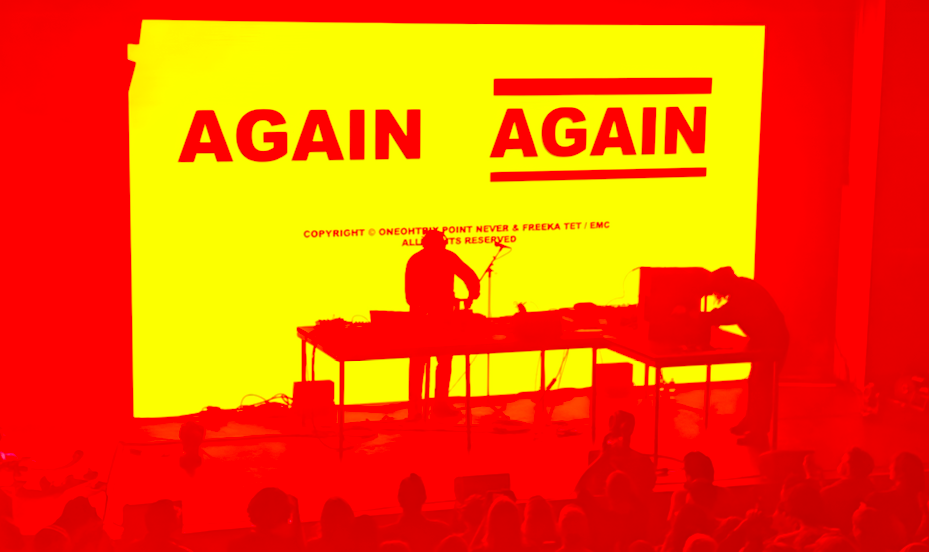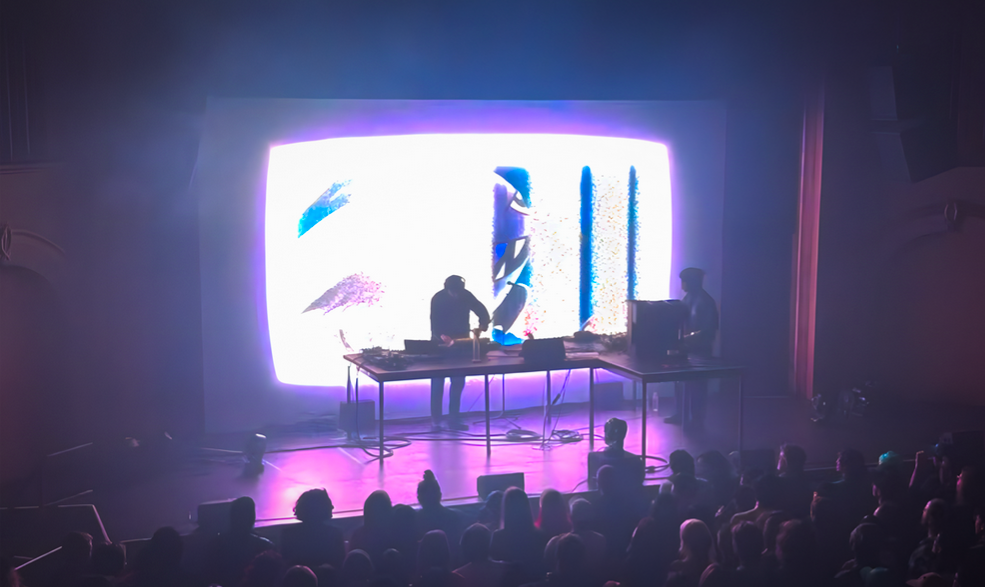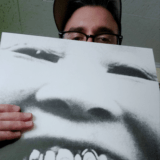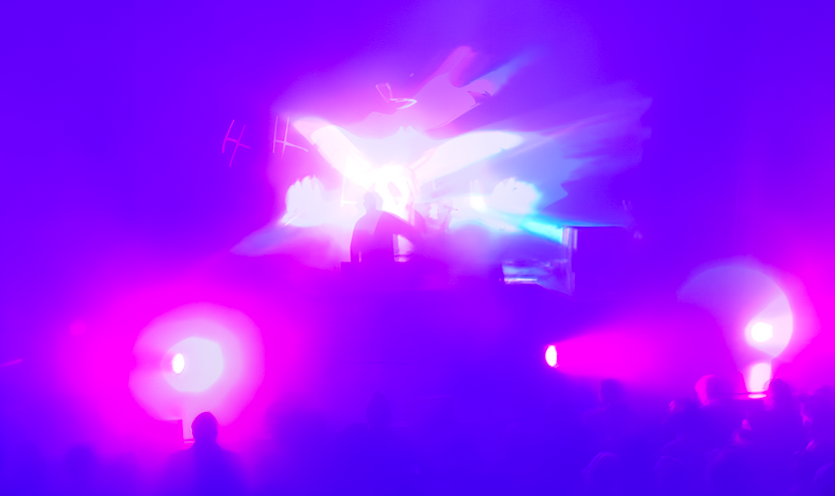It was a seemingly ordinary Wednesday in mid April. For the crowd gathered at The Neptune Theater, we would experience the extraordinary. Oneohtrix Point Never was about to deliver a synesthetic dose of glitched-out psychedelia so potent it would distort the fabric of spacetime. Our minds open, awaiting expansion. The journey was about to begin.
Opening the sold-out show was Arushi Jain. Her sound draws upon Hindustani classical music, filtering its evocative drones through modular synthesis. The synth she played on stage was covered in so many patch cables, it was hard to see any of the keys or knobs. With a background in computer science, the technical nature of modular synths appealed to Jain when she started composing electronic music. Yet her songs have a deep spiritual quality, a digital age meditation. The crowd was swaying and swooning over her ethereal drones.

The sedate tranquility of the opening act would give way to anxious anticipation following her set. I caught glimpses of what was in store through Instagram stories posted by the upcoming performers. It did little to prepare me for what we were about to witness.
Beginning with the title track to his most recent album, “Again,” Daniel Lopatin, the creative force behind Oneohtrix Point Never, and visual artist/auxiliary musician Freeka Tet launched into a performance that would leave me in a state of total awe.
A glowing orb morphing on the screen behind the performers soon revealed the warped form of a third member. The room went dark as the intro drew to a close. Suddenly, the screen was aglow, and the entire room was coated in luminous red light. Displayed was the title card for tonight’s performance, “Again Again.”

The concept behind this performance is an extension of the one that informed the album “Again.” Lopatin stated he approached the writing process as a collaboration with his younger self. Sounds and samples from previous albums are recontextualized into new permutations that recall the past while facing the future. The sonic palette of his back catalog is applied with a modern approach, resulting in an album that sounds simultaneously fresh and familiar.
This approach was further applied to the setlist. The nature of “Again” allowed for seamless weaving of new and old material throughout the set. Tracks reaching as far back as 2009’s “Zones Without People” fit alongside recent material. Occasionally, songs from different eras were spliced together. A live hybridization of overlapping timelines. The flat circle of time combining past, present, and future before our very eyes.
Visually, this self-referencing theme reached new levels of meta madness on stage. With Tet in tow, the performance was elevated into a mind-bending experience. Through a combination of VFX projections, live filming, and handcrafted models — the mixed media approach to the stage show felt revelatory. The third member I mentioned earlier was a figurine of Lopatin, performing on a diorama of a stage mirroring the set up behind it. The figurine was wired like a digital age marionette, manipulated by a Playstation controller.
Throughout the performance, Tet would periodically leave his synth console to set up the miniature stage, filming a live feed to the screen behind Lopatin. Occasionally, the camera would veer away from the figurine to get the real Lopatin in the shot. Seeing multiple versions of Lopatin superimposed was very trippy. The headiness of such a meta concept had me deep in my own head, at times nearly forgetting there was a concert in progress.

Dense plumes billowing from fog machines covered the stage, rising up like ephemeral screens reflecting the projections. This created a pseudo-3D effect of distorted visions floating in the air. The hypnotic strobing of the lights paired with images of decades-old cartoons and commercial clips further warped our sense of time and place.
The visual elements were just as effective in moments where the music pulled back the intensity. During a more sullen song in the set, the figurine of Lopatin lay underneath its stage setup as if it were trying to hide. Draped in deep blue light, the tiny avatar was imbued with a sense of sadness that was more palpably felt through the music.
Despite being deeply mesmerized at times, the crowd was lively. Lopatin was feeding off the response, claiming partway through the performance that our energy put to shame the crowds he recently played for at Coachella. Seattle loves live music and Lopatin was loving Seattle. Portland would have a lot to live up to the following night.

A four-song suite of latter-half tracks from “Again” was capped off with fan favorite “Boring Angel” from 2013’s “R Plus Seven.” The performers briefly retreated before returning to rapturous applause for an extended encore. The room was energized and wanted more.
Starting with a mash-up of “Sleep Dealer” from 2011’s “Replica” and “The Body Trail” from “Again,” the hybrid track bridged a 12-year gap. The momentary calm of the “Magic Oneohtrix Point Never” track “Nothing’s Special” was shattered by an intense rendition of “Animals” from “Garden of Delete.” The crowd responded with a similar intensity.
Elated by the response, Lopatin gave the audience a choice: end the set on a positive note or go “super dark mode.” Equally elated, the crowd opted for the uplifting ending. The final track of the night was the final track from “R Plus Seven,” the digital hymnal “Chrome Country.” Though we were left to wonder what the timeline that went “super dark mode” got to witness, it was the ideal comedown after such a thrilling performance.
I left the theater that night with my sense of wonder blown wide open. Seeing something that spectacular was deeply inspiring. It had been a decade since I last saw Oneohtrix Point Never. I pray it won’t be another ten years to experience a performance like this again and again.
Author

Joel is an art damaged music nerd occasionally hugging trees and decrying the brutal nature of capitalism. He studied cultural anthropology and art history as an undergrad and is pursuing his AAS in graphic design at the Seattle Central Creative Academy. When not working on art, music, or writing, he’s usually hiking, biking, or lounging in his hammock reading manga.







Be First to Comment